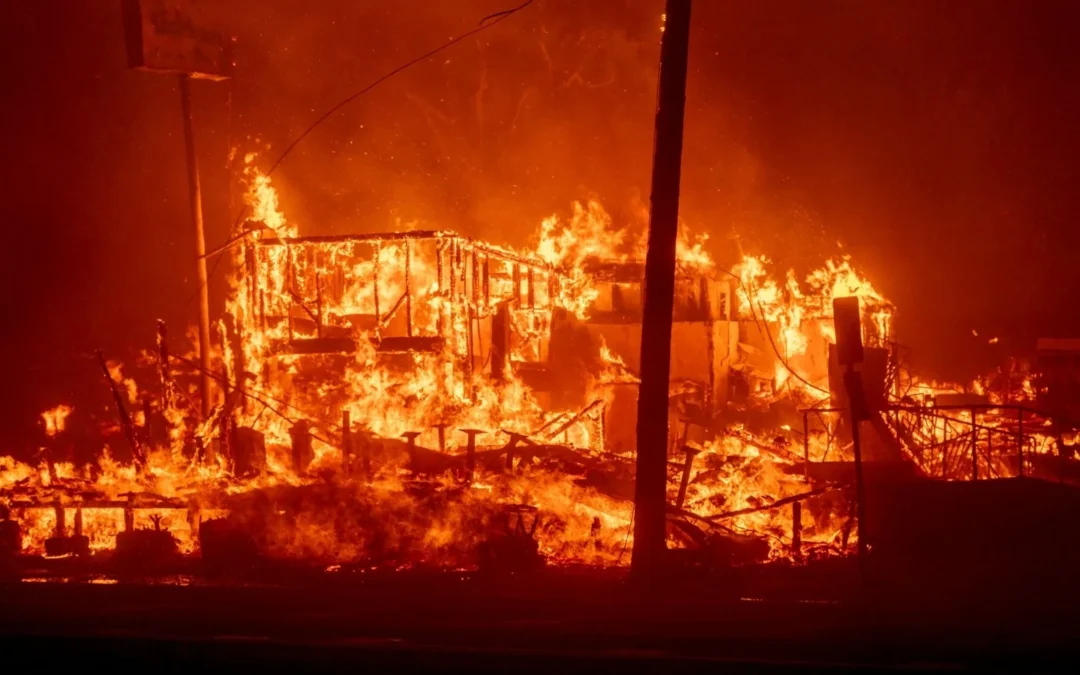Estimating insured losses is difficult given that fires are not fully contained. Nonetheless, significantly wide estimates for insured losses range between $10 billion and $30 billion, and economic losses between $150 billion to $275 billion, says Fitch
The Los Angeles wildfires, which have reduced entire neighborhoods to smoldering ruins and left an apocalyptic landscape, could become the costliest wildfires in U.S. history in terms of insured losses if analysts’ estimates of up to $20 billion materialize.
Dangerously high winds were expected to resume on Monday in Los Angeles, potentially hampering efforts to extinguish two stubborn wildfires that have claimed the lives of at least two dozen people.
The Los Angeles wildfire loss estimates are critical as they underscore the escalating financial risks posed by climate-related disasters, highlighting potential implications for the insurance industry and the broader economic resilience.
AccuWeather forecasts total economic losses from the disaster to range between $135 billion and $150 billion, signaling a challenging recovery and likely surging homeowners’ insurance costs.
Fitch
Not likely to affect ratings of property/casualty (P/C) (re)insurers
The multiple fires burning in the Los Angeles area will result in insured losses that materially exceed highs from past wildfire events but are not likely to affect ratings of property/casualty (P/C) (re)insurers, said Fitch Ratings.
Insured losses should remain within ratings sensitivities for affected issuers, given ample capital levels, diversified risk exposure and insurers’ ability to increase premium rates.
Estimating insured losses is difficult given that fires are not fully contained. Nonetheless, significantly wide estimates for insured losses range between $10 billion and $30 billion, and economic losses between $150 billion to $275 billion.
Expected losses for rated (re)insurers, while not affecting capital, will reduce near-term earnings, depending on exposure to claims from homeowners, auto, commercial property, and business interruption insurance. Companies most susceptible to negative rating actions are those where wildfire losses exceed earnings and reinsurance limits, weakening capital relative to rating sensitivities.
However, losses could pressure weaker capitalized companies, increase reinsurance costs, and further strain a system that has seen insurers retreat from the market. Several insurance companies have stopped writing new business in the state after reevaluating wildfire risk, pricing, and reinsurance market conditions.
Wildfire risk, while a growing source of insured losses in California, was previously viewed as a secondary peril to more costly hurricane and earthquake insured losses. Notably, the wildfire seasons of 2017 and 2018 included the Tubbs and the Campfires with insured losses of $11.1 and $12.5 billion respectively, per Aon.
The largest California homeowners’ writers will bear significant losses from these events. The location of the fires within higher valued property neighborhoods will exacerbate losses for insurers focused on the high net worth (HNW) market and excess and surplus (E&S) lines carriers due to more specialized underwriting and valuation requirements.
Substantial losses will also be incurred by California’s insurer of last resort, The Fair Access to Insurance Requirements (FAIR) Plan, as many insurers have reduced policies in the market in recent years due to higher losses and regulatory pricing restrictions. FAIR Plan policy count increased by 35% in the 12 months ending Sept 30, 2024 to over 450,000.

